
Cannabis collectibles tell the story of prohibition, racism and legalization
Marijuana memorabilia has come a long way from chillum pipes and drug rug sweatshirts. As cannabis and weed related companies adopt progressive laws and sophisticated branding, consumers and weed lovers are rushing to salvage all these gems from the increasingly bygone Prohibition era.
Treasured by collectors for their historical and personal value, Prohibition-era marijuana memorabilia commemorates a time we will (hopefully) never live to see again.
Buckle buffers smoked at Woodstock
Jake Fulteron was looking to replace the handmade hippie belt-buckle whistle he lost at the 1969 Woodstock Music Festival, an endeavor that amounted to “roughly 900 pounds of brass” in the form of buckled whistles, also known as “buckle bumpers.” .”
He explains that “they sold these buckle bumpers to Lanyards. I ended up with a buckle buffer, they weren’t called that back then, [and] I lost it. I’ve spent a lifetime trying to get it back. It was a quest. I’ve been looking for decades.”
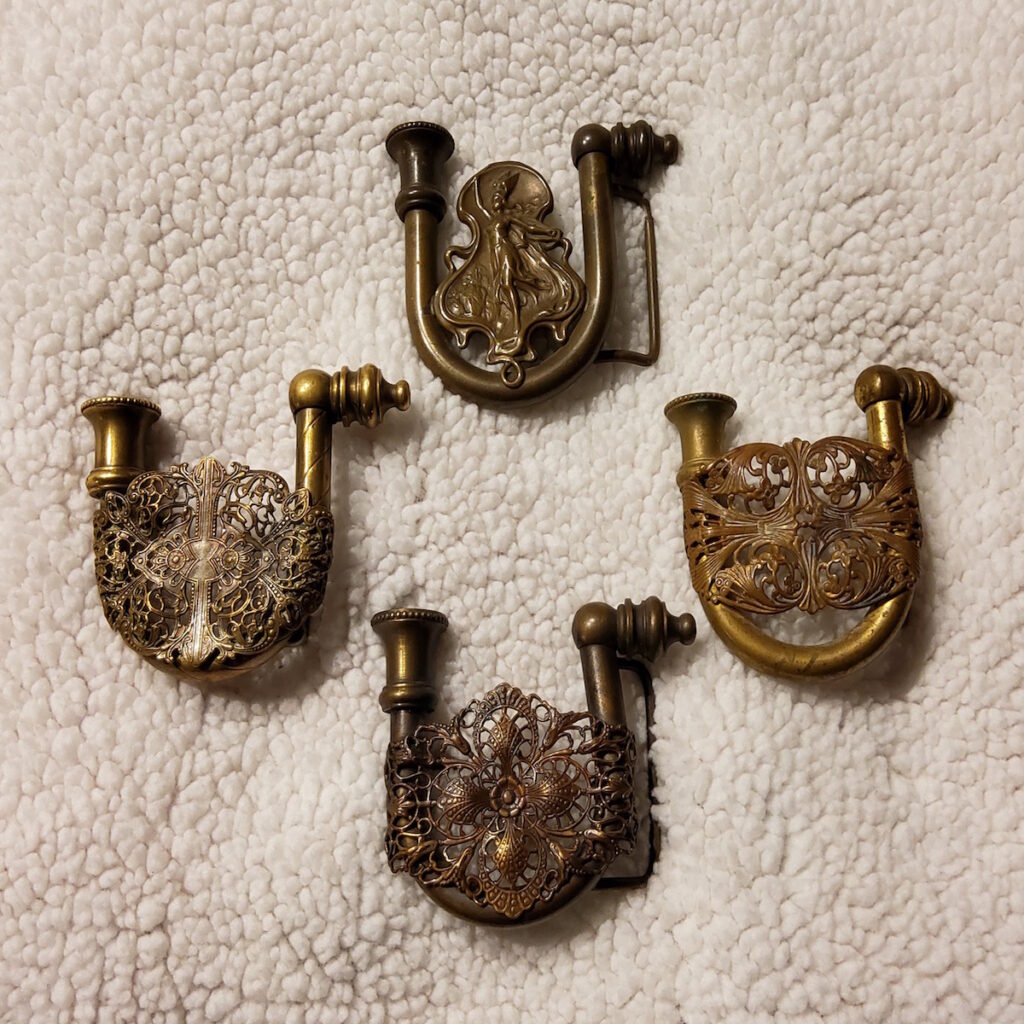
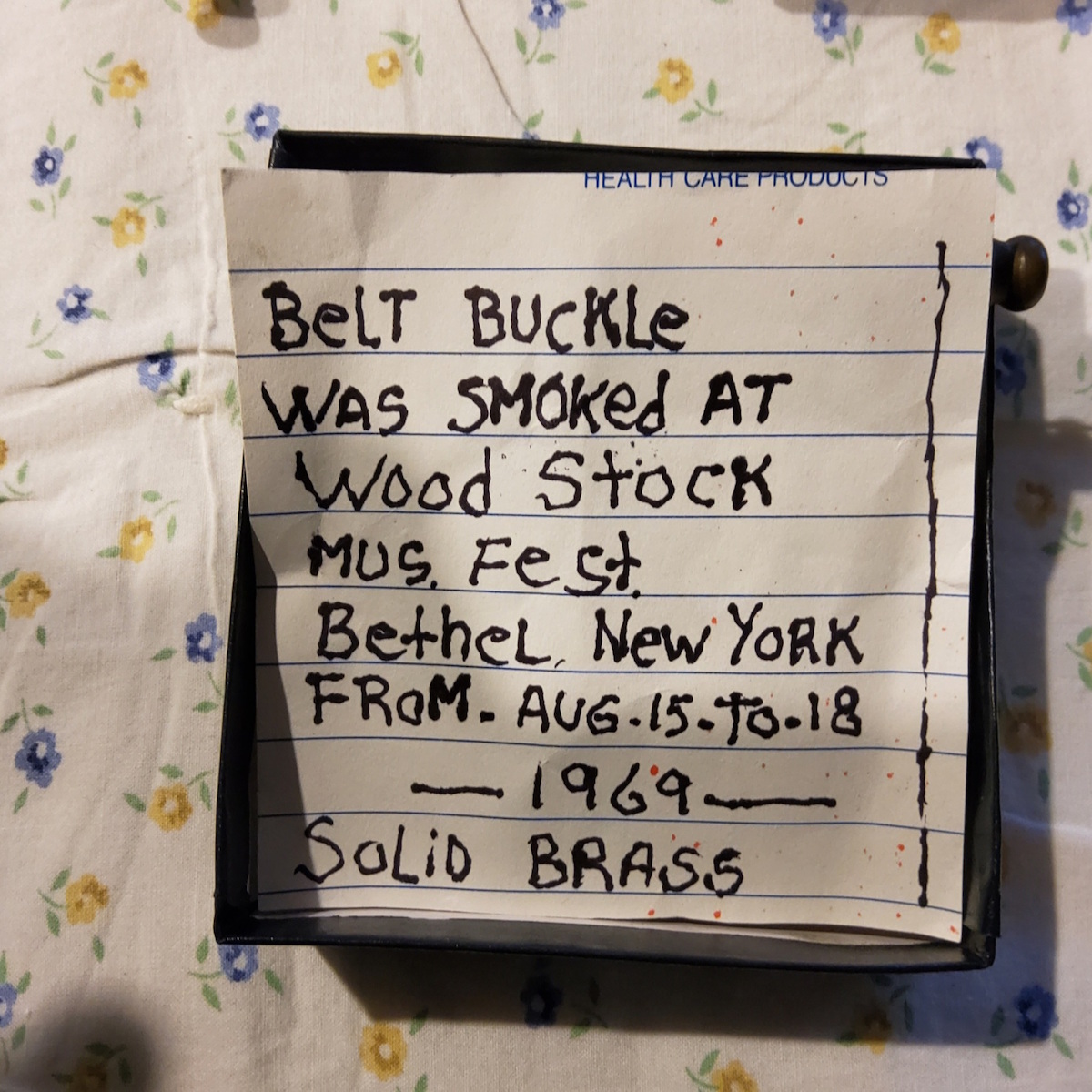
A year ago, Fulteron finally tracked down one of those elusive buckled bumpers: “It was in front of me and I was like ‘that’s my pipe.’ I know what the hippie filigrees are – I have 40.” He estimates he has around 1,000 buckles in total.
His fascination with buckles comes from the work that goes into them.
“These whistles are art made out of necessity for people who wanted to be free. The craft is an art.” He has sharpened his eye to the point where he can distinguish between buckles by their workmanship.
Jake Fulteron
“There’s a difference between the buckles of the ’60s and the buckles of the ’70s, and it’s clear. The marijuana buckles in the ’60s were all handmade, the ’70s are more mass-produced.”
From there, Fulteron’s vast knowledge of cannabis-inspired collectibles has taken him off the niche buckles to scavenging ephemera from all aspects of the headshop.
“I went all out, bought old posters, clothes, spoons, buckles, everything. I managed to snag the wholesalers’ catalogs that were intended for head shops. It’s hundreds of pages of everything that goes into supplying a head shop. Then I knew what was important.”
Collectors say they can distinguish between the years the belt buckles were made. (Courtesy of Jake Fulteron)
Their illegality and small print runs make tracking down these hemp treasures a challenge, so when they do occur, finds are random. Fulerton also sees parallels in how culture increasingly values objects and memorabilia from oppressive eras.
“I really think it’s an interesting subject, people collect Prohibition-era items. They buy whole bars and speakeasies.”
The Racist Legacy of Prohibition
Another find of Domer’s is Emily Murphy’s 1922 book The Black Candle, which is often cited as scary, racist propaganda promoting the prohibition of opium and cannabis.
“[It’s] like your grandmother never saw or touched drugs but wrote a book about it. Today you would call it fake news,” he says.
The Black Candle is a prime example of racism disguised as Prohibition propaganda that severely harmed minorities, particularly Asian Canadians, who bore the brunt of the Opium Act penalties. Collectors could purchase this first print for about $90.
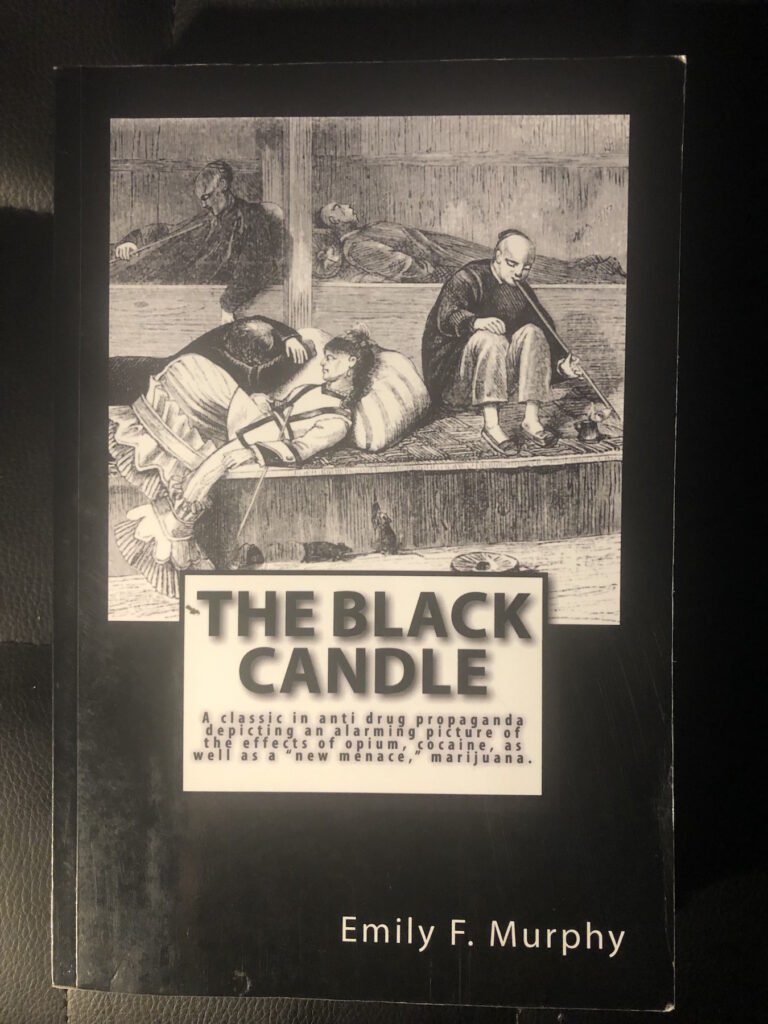
“Cannabis prohibition is deeply rooted in racism,” explains Abi Sampson, professor of cannabis regulation at Centennial College. “Drug criminalization started as a way to control the Japanese and Chinese who worked here on the railroad. They faced rampant racism and xenophobia that led to the Opium Law. Emily Murphy’s book came out and the anti-Asian sentiment translated into her book.”
Even pro-cannabis articles from back then can have uncomfortable racist undertones. The Great American Buckle Co. Pot Series Belt Buckle is a unique piece of cannabis culture from the 70’s, but designed with stereotypes in mind. One, called “Vietnamese,” features a cartoon of an Asian man smoking a joint with chopsticks.
“I consider this a piece of memorabilia. It perfectly embodies the racism of the time. It’s an example of how stigma is spread in popular media and fashion,” said Sampson, who compared the buckle to other uncomfortable popular culture.
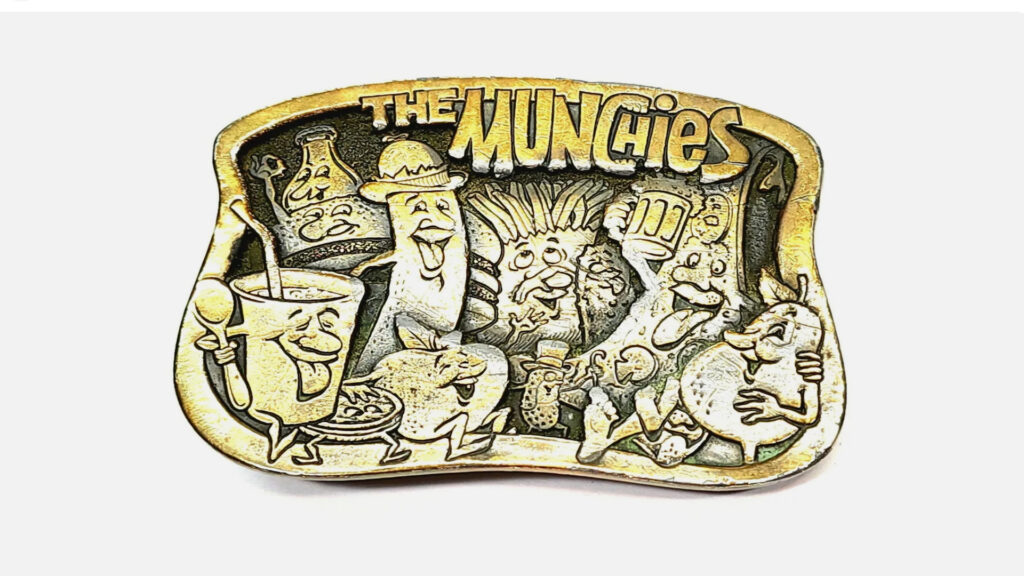
“It’s like people can be really excited about Dukes Hazards, you can be a huge fan but know you’re not allowed to fly the Confederate flag.”
The “Vietnamese” buckle has historical value, which Sampson said: “I think it would have a home in the Amsterdam Hash and Marijuana Museum. It’s part of cannabis culture and the history of our origins.”
The emergence of a marijuana museum
Many collectors of marijuana memorabilia are inspired by the historical connection of the items, and some collections grow so large that they become museums.
Sensi Seeds founder Ben Dronkers has established museums in Amsterdam and Barcelona, and the prized collection includes a 1660 painting by artist David Teniers (The Younger) of people seated around a table and smoking cannabis.
Domer uses the items from his memory stash to tell a localized Prohibition story. “I wasn’t trying to build a collection,” he said, “I just had some nice and interesting stuff. I wanted to find some interesting artifacts related to cannabis and Calgary. It has a personal cache.”
Like his signed original Cheech & Chong vinyl, which Domer had Tommy personally autograph after the journalist tracked down the first place Chong had ever smoked weed. Note it’s in Calgary but serious research was needed because Tommy misremembered the venue name.

Locating Illegal Illuminated Literature in North America
Journalist and cannabis tour guide Dave Domer was given an original, handcrafted 1974 cannabis grow guide by his uncle, Grow Yer Own Stone by Dr. Alexander Sumac. It has collected dust in a drawer.
“He moved and packed up his house,” says Domer. “He emailed me to say he found something for me. I met him for breakfast and he pulled out an original copy of Grow Yer Own Stone.”
Related
The History of Cannabis Prohibition in the United States
The 1974 Grow Yer Own Stone would be comparable to the first appearance of Spiderman (Amazing Fantasy #15) in that it documents Canada’s first steps towards legalization.
The book’s ganja goony art style would become an international hit by thirteen printings; it is currently valued by book collectors at around CAD$175–250.
In the 1990s, Dr. Sumac testifies to the Canadian Senate on the utility of hemp. His testimony helped Canada introduce limited exemptions for hemp cultivation.
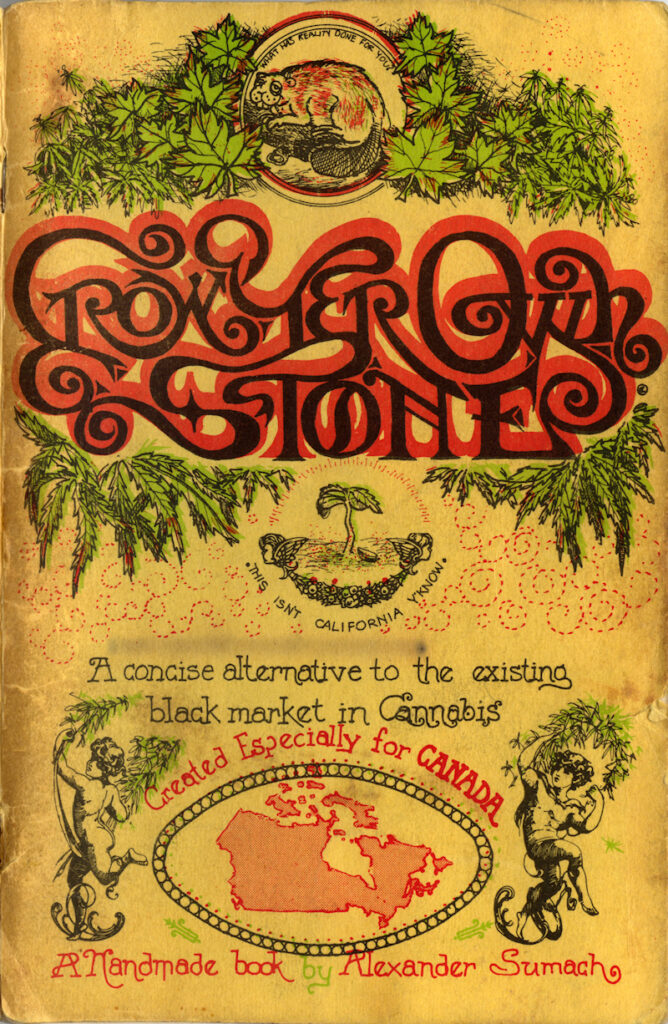
While rummaging through a box of toys in a dingy rural “treasure shop,” I happened to stumble across another Dr. Sumac Collaboration – The Underground Games Company 1983 Trafficking Board Game – Complete with Ontario’s Addiction Research Foundation booklet entitled “Marijuana: Answers for Young People and Parents.”
The owner didn’t know they had it and eagerly took twenty dollars. The Canadian game beautifully captures the 80’s vibe of Toronto weed trading, satirizing landmarks and logos with a subtle toker brush.
The arrival of human trafficking comes at a unique time in the history of Canada’s drug war, for in 1988 the Conservative government promulgated Penal Code 462.2, making even possession of a book about weed a crime.
DID YOU KNOW:
In the late 80’s stoners weren’t even allowed to own literature from NORML Canada, and it wasn’t until their landmark 1994 court ruling that Generation X could talk openly about pot and legally buy Grow Yer Own Stone. The ruling is Canada’s first breach of Prohibition and sets us on course to use the courts to effect change.
Modern memorabilia and legacy items
Marijuana memorabilia doesn’t have to be old to be considered collectible. Take the early iterations of Canada’s cannabis branding. How many people have kept their Canadian Legacy-era product packaging?
Cannabis seed collectors love their packaging and @goshenthegreen not only has some great packaging from breeders like TGA Subcool, DJ Short and Oaksterdam clone catalogs from the 2000’s.
I personally collect seed packs and catalogs and really miss the Canadian breeder Willy Jack Seeds who was very popular in the 2000’s. These packs have a personal cache because the cops cleaned out my extensive Willy Jack Seeds collection when my house was searched. (Humans also collect the seeds, but that’s a whole different conversation.)
Cannabis collectors and their treasures of history help us remember our prohibitionist past and the vibrant subculture that existed despite being illegal.
As we settle into legalization, the story is still unfolding in flea markets, thrift stores, cannabis groups, and online seller sites like eBay just waiting for you to find a piece.
Matt Mernagh
Matt Mernagh’s remarkable cannabis career spans twenty years. His Marijuana Smoker’s Guidebook reached #1 on Amazon and he hosted a live weed webcast called The Mernauana Zone. Matt also has a notable history of activism, co-founding 420 Toronto Smoke Out and receiving a court dispensation to legally grow weed (before it was legal).
Check out Matt Mernagh’s articles
By submitting this form, you are subscribing to Leafly news and promotional emails and agreeing to Leafly’s Terms of Service and Privacy Policy. You can unsubscribe from Leafly email communications at any time.

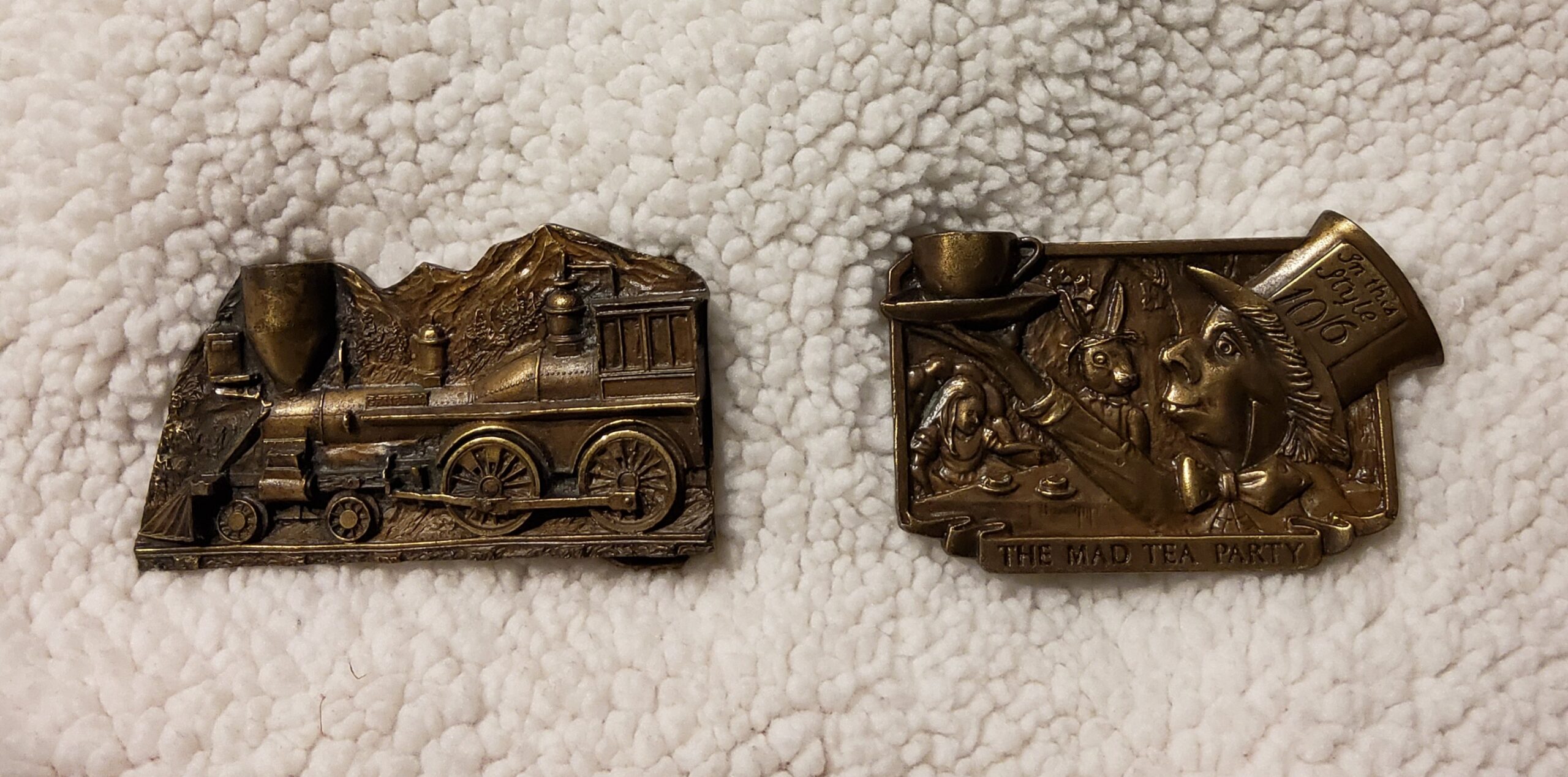
Post a comment: